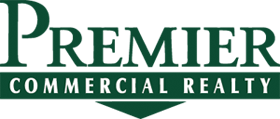How to Price Commercial Real Estate in Today’s Market
Every client who has a property to sell or lease starts out asking for our opinion of what the property is worth on today’s market. What a weighty question to have to answer honestly and professionally! In this market, we swallow hard and hope they don’t shoot the messenger. A guy who makes a living just doing appraisals looks at the question of value one way. We brokers in the trenches every day look at the same issue perhaps a little differently.
Transaction volume is sometimes so sparse that the comparables (we call them “comps”) are hard to come by. The ones that do show up in the comp data bases are often bank foreclosures or distress sales which are considered “non-arms length” transactions, “traif” if you know any Yiddish. What do you do when the bank making the loan insists on comps from 2019 or 2020 and there aren’t any to be found? Appraisers call us daily picking our brain for current sales and leases they can use in their reports. Market knowledge is a valued commodity and we usually have lots of it. And we give it freely.
How do we peg a value on a property? What’s the methodology? Is there a science to it? Do we pull a number out of the air? From my point of view, it’s all about finding the market. I liken the process to reading the “Where’s Waldo” books to my kids. Where’s the market is the operative question? For each commercial property type the answer is going to be a little different. We start by looking at anything close to the subject (property being evaluated) that has sold or leased in the past 2-3 years. Then we look at what is on the market currently that will be competing with the subject. If the subject is priced higher than one or more similar competing properties, it is not going to be perceived as competitive (all things being equal). In the case of income producing properties, we use a different kind of analysis to arrive at values. We look at the income stream, determine a net operating income (NOI – income minus a vacancy factor minus expenses) and use a market derived capitalization (“cap”) rate to apply to the NOI to arrive at a value. Cap rates and values have an inverse relationship. The higher the cap rate, the lower the value. The lower the cap rate, the higher the value. Guess what’s happening in this market? Cap rates are going up meaning investors believe risk is greater and they insist on a higher rate of return than they did previously. They refuse to pay as much for the exact same property they looked at a year or two ago. To sell it, the property owner needs to take less.
So, we try to use tried and tested approaches to arrive at a realistic asking price. We use every exposure vehicle at our disposal to drag a property to the marketplace and then we monitor what happens. Is anybody inquiring about it? Is anyone looking at it? Any actual offers being made? If none of those things are happening, the market is rejecting the property at its current pricing. We will often recommend a price adjustment to go “find” the market. Too simplistic? Could there be some problem other than price? Perhaps, but not very often. Especially if the exposure program is thorough, which ours is.
For professional real estate brokers, pricing is not done in a vacuum. A lot of thought, a lot of market data and a lot of experience go into this all important process. If you allow your property to be priced too high, it won’t sell and a lot of time and effort will be wasted. With average time on market now in the 12-18 month range for certain property types, you don’t want to prolong the agony by pricing you property at an unrealistic number.
by Bruce Kaplan, Senior Broker associate with Premier Commercial Realty in Lake in the Hills.


